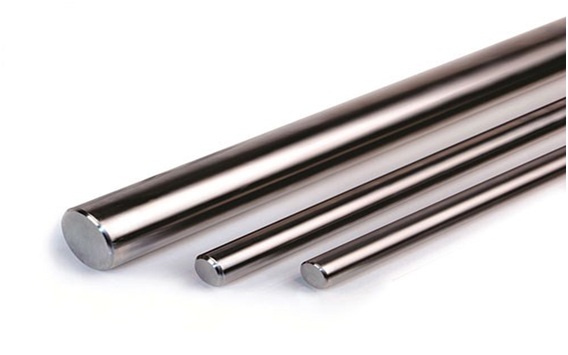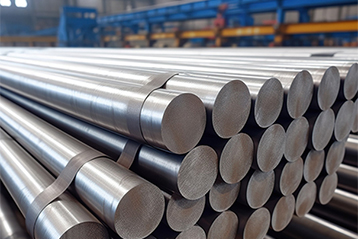A Comparison of 316, 316L, and 316Ti Stainless Steels
Date : Sept 28, 2023An austenitic 316 stainless steel alloy is composed of 16-18 % chromium and 10-14 % nickel, with 2-3 % molybdenum added. The molybdenum addition gives 316 better overall corrosion resistance than 304 stainless steel, particularly higher resistance to pitting and crevice corrosion in chloride environments. As well as higher corrosion resistance against sulfuric, nitric, or hydrochloric acids.
316L is a low-carbon version of 316 stainless steel. It has the same corrosion resistance as 316, but it is more weldable and can be used in applications where the risk of hydrogen embrittlement is high.
The following are some of the specific applications of 316 stainless steel:
Chemical processing plants: Stainless steel 316 is used in chemical processing plants because of its resistance to a variety of chemicals. It is used in the manufacture of pipes, valves, pumps, and other machinery.
Food processing equipment: 316 stainless steel is used in food processing equipment because it resists corrosion from acids that exist in food and other chemicals. It is used in the production of cutlery, countertops, and other equipment.
Architectural applications: 316 stainless steel is used in architectural applications because it is durable and has a good appearance. It is used for building facades, railings, and other structures.
Power plants: 316 stainless steel is used in power plants because of its resistance to high temperatures and corrosion. It is used for pipes, valves, and other equipment.
Water treatment plants: 316 stainless steel is used in water treatment plants because of its resistance to corrosion by chlorine and other chemicals. It is used for pipes, valves, and other equipment.

316L Stainless Steel
316L stainless steel is a low-carbon version of 316 stainless steel. It has the same corrosion resistance as 316, but it is more weldable and can be used in applications where the risk of hydrogen embrittlement is high.
The "L" in 316L stands for "low carbon". The carbon content of 316L is limited to 0.03%, while the carbon content of 316 can be up to 0.08%. The lower carbon content of 316L makes it less susceptible to chromium carbide precipitation, which can lead to weld decay. Weld decay is a type of corrosion that can occur in welded stainless steels. It is caused by the precipitation of chromium carbides at the grain boundaries of the weld metal. These chromium carbides can form a barrier that prevents chromium from reaching the surface of the metal, which can lead to corrosion.
316L stainless steel is also more resistant to stress corrosion cracking than 316 stainless steel. Stress corrosion cracking is a type of corrosion that can occur when a material is under stress and exposed to a corrosive environment. 316L is more resistant to stress corrosion cracking because the molybdenum in the alloy helps to stabilise the chromium in the steel.
The following are some of the specific applications of 316L stainless steel:
Chemical processing plants: 316L stainless steel is used in chemical processing plants because of its resistance to a wide variety of chemicals. It is used for pipes, valves, pumps, and other equipment.
Food processing equipment: 316L stainless steel is used in food processing equipment because it is resistant to corrosion by food acids and other chemicals. It is used for utensils, countertops, and other equipment.
Marine applications: Stainless steel 316L is commonly used in marine applications due to its ability to resist salt water corrosion. This steel is commonly used in the construction of ships, boats and other equipment.
Medical devices: Stainless steel 316L is utilized in medical devices due to its biocompatibility and resistance to corrosion caused by bodily fluids. It is employed in implants, surgical tools, and other equipment.
Architectural applications: 316L stainless steel is used in architectural applications because it is durable and has a good appearance. It is used for building facades, railings, and other structures.
Power plants: Stainless steel 316L is commonly used in power plants due to its ability to withstand high temperatures and resist corrosion. It is commonly used in pipes, valves and other equipment.
Water treatment plants: 316L stainless steel, is utilized in water treatment plants due to its ability to resist corrosion caused by chlorine and other chemical agents. It is employed in a variety of applications, such as the construction of pipes and valves.

316Ti Stainless Steel
The composition of 316Ti stainless steel is as follows:
- 16 to 18% chromium
- 10 to 14% nickel
- 2 to 3% Molybdenum
- 0.4 to 0.6% titanium
The addition of titanium allows 316Ti to resist sensitization, which is the process of heating stainless steels to temperatures between 425 to 815 degrees Fahrenheit (800 to 1500 degrees Celsius). Sensitization occurs when chromium carbides precipitation at grain boundaries of stainless steel, resulting in corrosion.
Titanium in 316Ti reacts to the carbon in stainless steel, forming titanium carbides. These carbides are more stable than the chromium carbides, reducing the risk of corrosion in 316Ti.
Surgical implants: 316Ti is utilized in surgical implants due to its biocompatibility and ability to resist corrosion caused by bodily fluids.
Jewellery: 316Ti is a great choice for jewellery because it's tough and resistant to corrosion. Additionally, its superior strength and resistance to corrosion can be utilized in applications up to 2,700 degrees Fahrenheit (1,650 degrees Celsius) due to its ability to withstand high temperatures.
Nuclear power plants: 316Ti is used in nuclear plants because it's good at protecting against radiation and corrosion from coolant water.
Conclusion
316, 316L, and 316Ti stainless steels are all austenitic stainless steels, which means they are non-magnetic and have excellent corrosion resistance. However, there are some key differences between the three grades. The best grade of stainless steel for your application will depend on your specific requirements. If you need a general-purpose stainless steel with good corrosion resistance, then 316 stainless steel is a good choice. If you need stainless steel with even better corrosion resistance, especially in environments where sensitization is a concern, then 316L stainless steel is a better option. If you need stainless steel with high strength and excellent corrosion resistance, even in high-temperature environments, then 316Ti stainless steel is the best choice.

